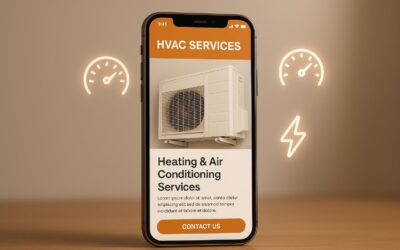Managing Your SEO Efforts Across All Your Service Areas
If you’re like many of us managing a business with multiple locations, you understand the blend of excitement and challenge that comes with expanding your digital footprint. While reaching new service areas holds immense promise for growth and customer engagement, it also presents hurdles that require careful navigation to achieve online success.
From ensuring consistency across listings to standing out in competitive local markets, the world of Multi-Location SEO can seem like a labyrinth at times. But fear not! Our mission is to guide you through these challenges and help you unlock the full potential of Multi-Location SEO. In this blog, we’ll explore the common obstacles faced by businesses like yours and offer practical solutions to thrive in each service area.
What is Multiple Location Local SEO?
Multi-Location Local SEO, is a specialized digital marketing strategy tailored for businesses operating and serving in multiple locations. It focuses on optimizing a business’s online presence to target local customers across various service areas effectively. Unlike traditional SEO, which aims to improve a website’s visibility on a global or national scale, Multi-Location SEO hones in on the unique needs and preferences of customers in specific geographic regions.
The essence of Multi-Location SEO lies in its ability to ensure that each location of a business ranks prominently in local search engine results pages (SERPs). This means that when potential customers in a particular area search for products or services related to your business, they are more likely to encounter relevant information about nearby locations. Nearly half of all Google searches have local intent, meaning users are actively seeking nearby businesses or services. Optimizing for local SEO can help capture this audience and drive more foot traffic to physical locations. Since Google and other search engines use a searcher’s location to find local relevant service providers, optimizing your business for all the areas that you are willing to provide is essential to ensuring that you are maximizing your leads. This localized approach not only increases the visibility of individual branches or outlets but also enhances the overall brand presence in each service area.
Key components of Multi-Location local SEO include optimizing Google My Business (GMB) listings for each location, creating dedicated landing pages with location-specific content on the business website, and incorporating relevant keywords and geographic modifiers into website content and meta tags. Additionally, ensuring consistency in Name, Address, and Phone Number (NAP) citations across online directories, review platforms, and social media profiles is essential for establishing credibility and trust with both search engines and potential customers.
Multi-location local SEO is particularly beneficial for businesses with physical storefronts, such as retail chains, restaurants, healthcare facilities, and service providers with multiple offices or branches. By implementing a targeted Multi-local SEO strategy, these businesses can attract highly relevant traffic, improve customer engagement, and drive foot traffic to individual locations. Ultimately, Multi-Location local SEO empowers businesses to connect with local audiences on a granular level, driving growth and success in each service area.
What’s the Benefit of Multiple-Location Local SEO?
Multi-Location Local SEO offers a number of benefits for businesses operating in multiple service areas.
The Benefits of Multiple-Location SEO include:
- Increased Local Visibility: According to a study by BrightLocal, 72% of consumers who perform a local search visit a store within five miles of their current location. One of the primary advantages of Multiple-Location SEO is the ability to increase local visibility for each branch, outlet, or office of a business. By optimizing online presence for specific geographic areas, businesses can ensure that potential customers in each location can easily find them when searching for relevant products or services.
- Targeted Traffic: Multiple-Location SEO enables businesses to attract highly targeted traffic from each service area. By incorporating location-specific keywords and optimizing content for local search intent, businesses can ensure that the traffic they receive is not only relevant but also more likely to convert into customers.
- Enhanced Brand Presence: By optimizing for multiple locations, businesses can strengthen their brand presence in each service area. When potential customers consistently encounter information about a business in their local area, it reinforces brand recognition and trust, leading to increased engagement and loyalty.
- Competitive Advantage: Proper implementation of Multiple-Location SEO can provide businesses with a significant competitive advantage over competitors who may not be optimizing their online presence for multiple locations. By dominating local search results in each service area, businesses can capture market share and stay ahead of the competition.
- Improved Customer Experience: Multiple-Location SEO isn’t just about optimizing for search engines; it’s also about enhancing the overall customer experience. By providing accurate and relevant information about each location, such as address, phone number, business hours, and directions, businesses make it easier for customers to find and engage with them.
- Better Local Engagement: Businesses that invest in Multiple-Location SEO often experience higher levels of local engagement. This includes increased website visits, phone calls, inquiries, and foot traffic to individual locations, all of which contribute to business growth and success.
- Measurable Results: Multiple-Location SEO allows businesses to track and measure the effectiveness of their online marketing efforts in each service area. By monitoring key metrics such as organic traffic, keyword rankings, and conversion rates for each location, businesses can identify areas for improvement and optimization.
- Scalability and Expansion: For businesses looking to expand into new markets or open additional locations, Multiple-Location SEO provides a scalable solution. By applying proven SEO strategies to each new location, businesses can quickly establish a strong online presence and attract customers from day one.
Key Strategies for Multi-Location Local SEO Success
Achieving success in Multi-Location Local SEO requires a comprehensive strategy that addresses the unique needs and challenges of each service area. Here are key strategies to help businesses optimize their online presence and drive results:
- Create Individual Location Pages:
Develop dedicated landing pages for each location on your website. These pages should include essential information such as address, phone number, business hours, and directions. Additionally, incorporate unique content that highlights the specific offerings, services, and amenities available at each location. By providing detailed and relevant information, you can improve the user experience and increase the likelihood of conversions. - Optimize Google My Business (GMB) Listings:
According to Google, businesses with accurate and optimized Google My Business listings are 70% more likely to attract location visits from browsing users and are twice as likely to see them converted into paying customers. Claim and verify your Google My Business listings for each location. Ensure that all information is accurate and up-to-date, including business name, address, phone number, website URL, and categories. Encourage satisfied customers to leave positive reviews, as they can significantly impact your visibility and credibility in local search results. Regularly monitor and respond to reviews to maintain a positive online reputation. - Localize On-Page SEO
Incorporate location-specific keywords naturally into your website content, meta tags, headings, and image alt text. Conduct keyword research to identify relevant terms and phrases that potential customers in each service area are likely to use when searching for products or services. Optimize title tags and meta descriptions to include location modifiers and attract clicks from local searchers. - Consistent NAP Citations:
Ensure consistent Name, Address, and Phone Number (NAP) citations across all online directories, review sites, and social media platforms. Inaccurate or inconsistent NAP information can harm your local search rankings and confuse potential customers. Use tools like Moz Local or BrightLocal to manage and monitor your business listings across the web. - Generate Location-Specific Content:
Create blog posts, articles, and other content that are tailored to each service area. Highlight local events, news, and community involvement to demonstrate your business’s connection to the community. Showcase customer testimonials and success stories from each location to build trust and credibility with local audiences. Consider incorporating location-based landing pages for specific promotions or events happening in each area. - Local Link Building:
Build relationships with local businesses, organizations, and influencers to earn backlinks from reputable websites in each service area. Quality backlinks from local sources can improve your website’s authority and visibility in local search results. Offer to contribute guest posts or participate in local events to increase your exposure and attract relevant traffic from other websites. - Monitor and Manage Reviews
Regularly monitor and respond to reviews across all locations on platforms like Google, Yelp, and Facebook. Address both positive and negative reviews promptly and professionally to show customers that you value their feedback and are committed to providing excellent service. Encourage satisfied customers to leave reviews and testimonials to boost your credibility and reputation in each service area. - Track and Analyze Performance
Use analytics tools like Google Analytics and Google Search Console to track the performance of your Multi-Location Local SEO efforts. Monitor key metrics such as organic traffic, keyword rankings, and conversion rates for each location to identify areas for improvement and optimization. Analyze trends and patterns to refine your strategies and allocate resources effectivel
How do I rank for service areas for which I do not have a physical address?
Ranking for service areas in which you do not have a physical address is perhaps the biggest challenge for multi-location SEO but is still achievable with the right strategies. These strategies are similar to ordinary local seo practices but incorporate a few differences that allow you to hone in on specific service areas. Here are specific steps to help you rank for these service areas:
- Create Service Area Pages:
Develop dedicated service area pages on your website for each location you want to target. These pages should include relevant information about the services you offer in that area, customer testimonials, and any unique selling points. Use location-specific keywords in the page titles, headings, and content to optimize for local search intent. - Optimize Google My Business (GMB) for Service Areas:
Even if you don’t have a physical address in a particular service area, you can still create a GMB listing and specify your service area. Make sure to accurately define your service radius or specific zip codes to target. Include relevant keywords in your GMB profile description, and encourage satisfied customers to leave reviews mentioning the services provided in their area. - Local Citations and Directories:
Create local citations and listings on online directories, review sites, and industry-specific platforms, even if you don’t have a physical address. Include your business name, service area, phone number, and website URL in these listings. Focus on authoritative directories relevant to your industry and target locations. - Optimize On-Page SEO:
Incorporate location-specific keywords naturally into your website content, meta tags, headings, and image alt text. Create blog posts, articles, or case studies targeting keywords related to your service areas. Use schema markup and other technical seo strategies to highlight your service areas on relevant pages, such as “LocalBusiness” schema with the “areaServed” property. - Targeted Local Advertising:
Consider using targeted local advertising campaigns to reach potential customers in your service areas. Platforms like Google Ads or Facebook Ads allow you to target specific locations, demographics, and interests. Create ad copy and landing pages tailored to each service area to maximize relevance and engagement. Once you get customers in your area, you can have them leave reviews on your GMB page mentioning their area and how you helped them.
In conclusion, mastering Multi-Location SEO is essential for businesses with multiple locations seeking to thrive in today’s digital landscape. By addressing challenges with strategic solutions, such as optimizing Google My Business listings, creating location-specific content, and engaging in local link building, businesses can enhance their online presence and attract customers across all service areas. With diligence and the right tactics in place, businesses can achieve success in Multi-Location SEO and drive growth in their target markets.




